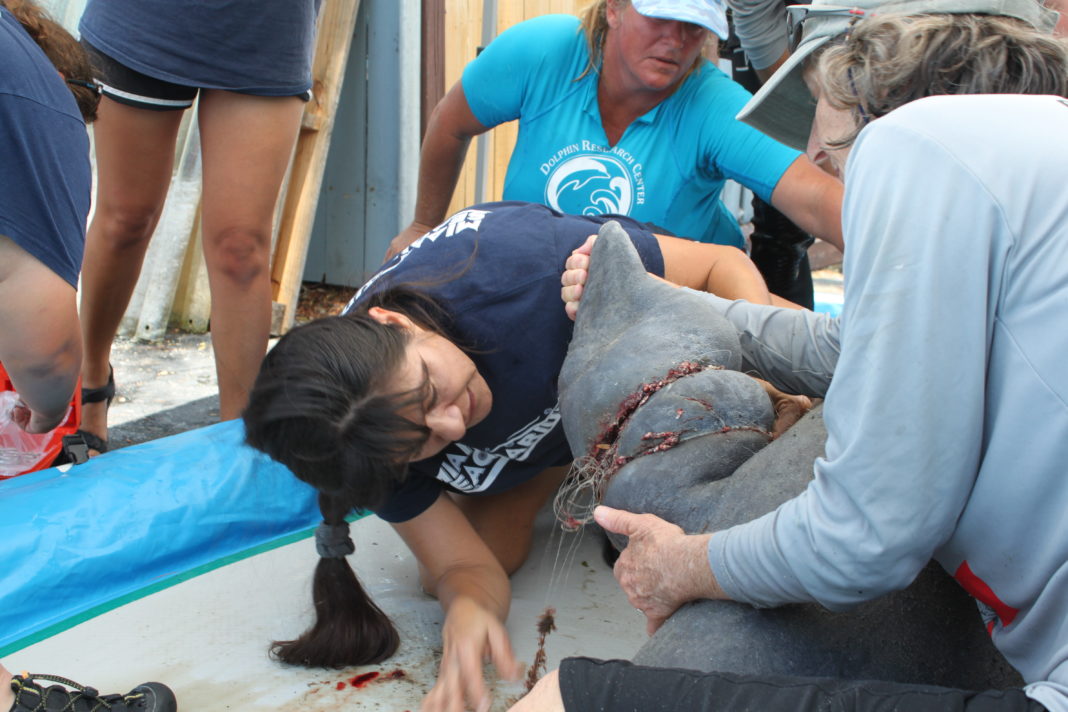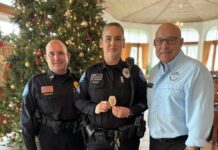The rescue of an entangled manatee started on the morning of June 6. Local resident and business owner Shayne Messina alerted the Dolphin Research Center that the injured animal, spotted over the past few days, was in a perfect spot — a canal in the Coco Plum neighborhood of the Middle Keys.
“There are no cowboys in an operation like this,” said DRC’s Mandy Rodriguez, saying the Manatee Rescue Team from the facility moves slowly. Indeed, there wasn’t a hurry. A couple of spotters in kayaks and a couple more arranged on the dock in front of AM Electric, kept their eye on the placid manatee.
The team positioned a sled, unraveled a net, and some donned scuba gear. Then the hoses and the lettuce came out.
“This is the ONLY time it’s acceptable to feed manatees, when you’re trying to lure them in for medical attention and ONLY when directed to do so by authorities,” said the DRC’s Mary Stella. “The one thing about manatees is that they can make a bunch of smart people look silly when you’re trying to catch them. The manatees don’t understand it’s our intention to help. They try to evade.”
This particular male manatee is about 800 pounds and 9 feet long, a young adult. Impossible to miss was the yards of monofilament line wrapped around its starboard flipper and a couple of loops on the port side. The right side lines were cutting deeply. Once on land — under the cover of a tent and with the liberal application of water and ice — the team waited for the veterinarian from Miami Seaquarium, Dr. Maya Rodriguez (no relation to Mandy). The veterinarian has been consulting with the Fish and Wildlife Commission state office located on the west coast of Florida.
She immediately set about disentangling the animal.
“People ask why we just don’t do it ourselves, or why people can’t just jump in the water and cut the line off and set the manatee free again,” said Mandy. “I’ve been doing this for 46 years and what we’ve learned is that once the ‘tourniquet’ comes off the bleeding can begin. We could find the animal dead later. That’s why we take our time, bring it to land, and have a vet on hand.”
The veterinarian made the decision to release the animal the same day. The line was removed, wounds cleaned, antibiotics administered and the animal was chipped. It was a big day for “Coco,” but it’s over now.


























